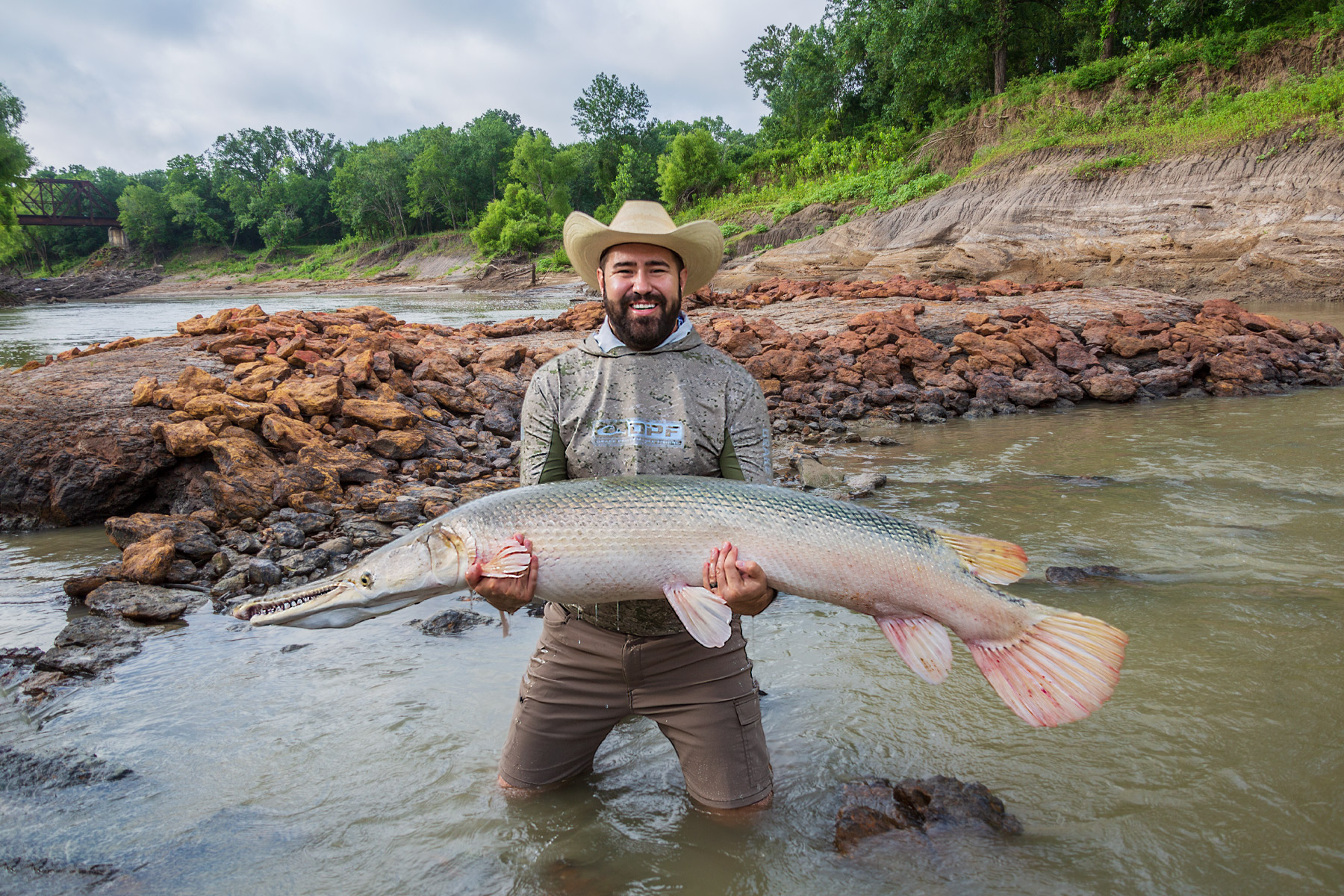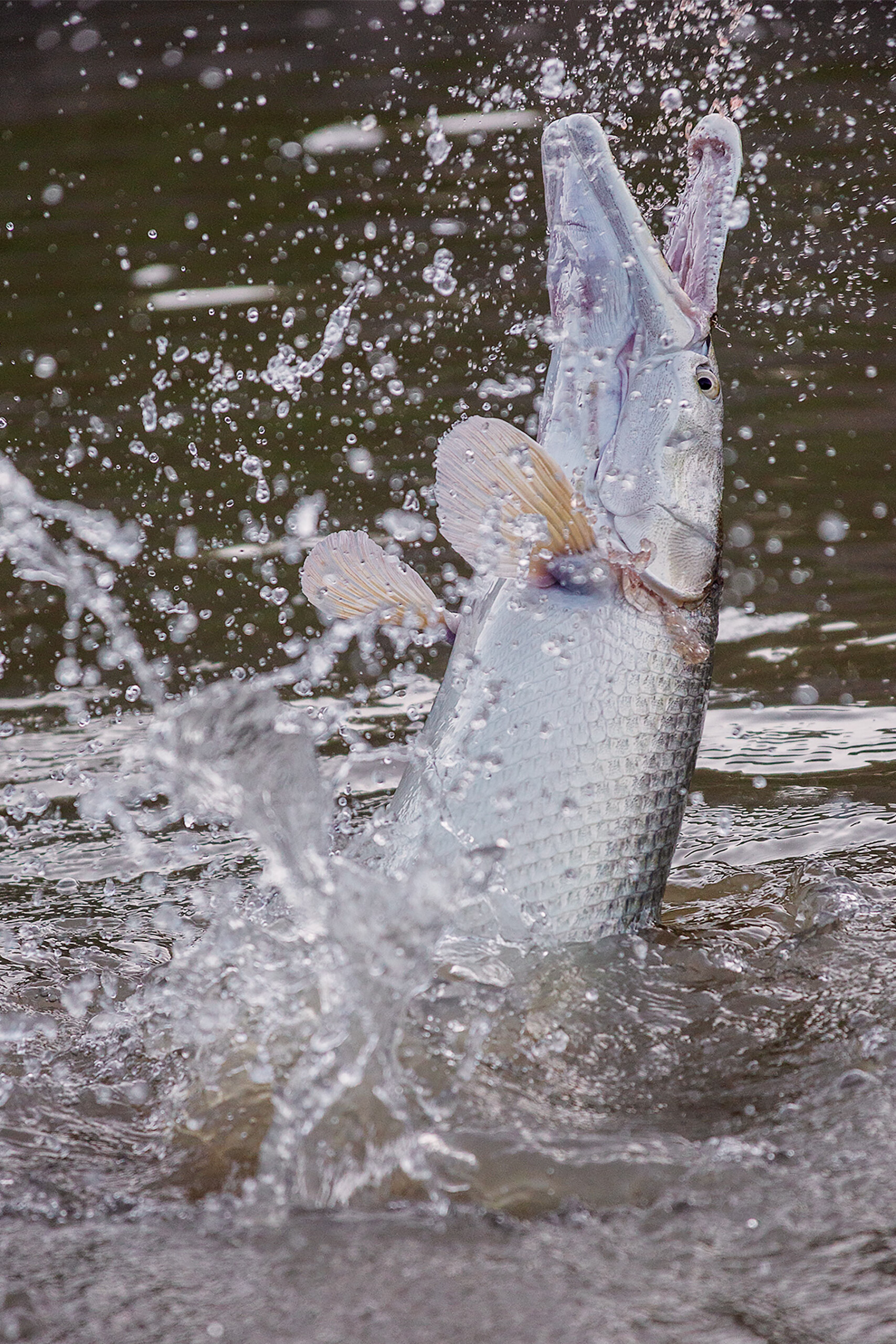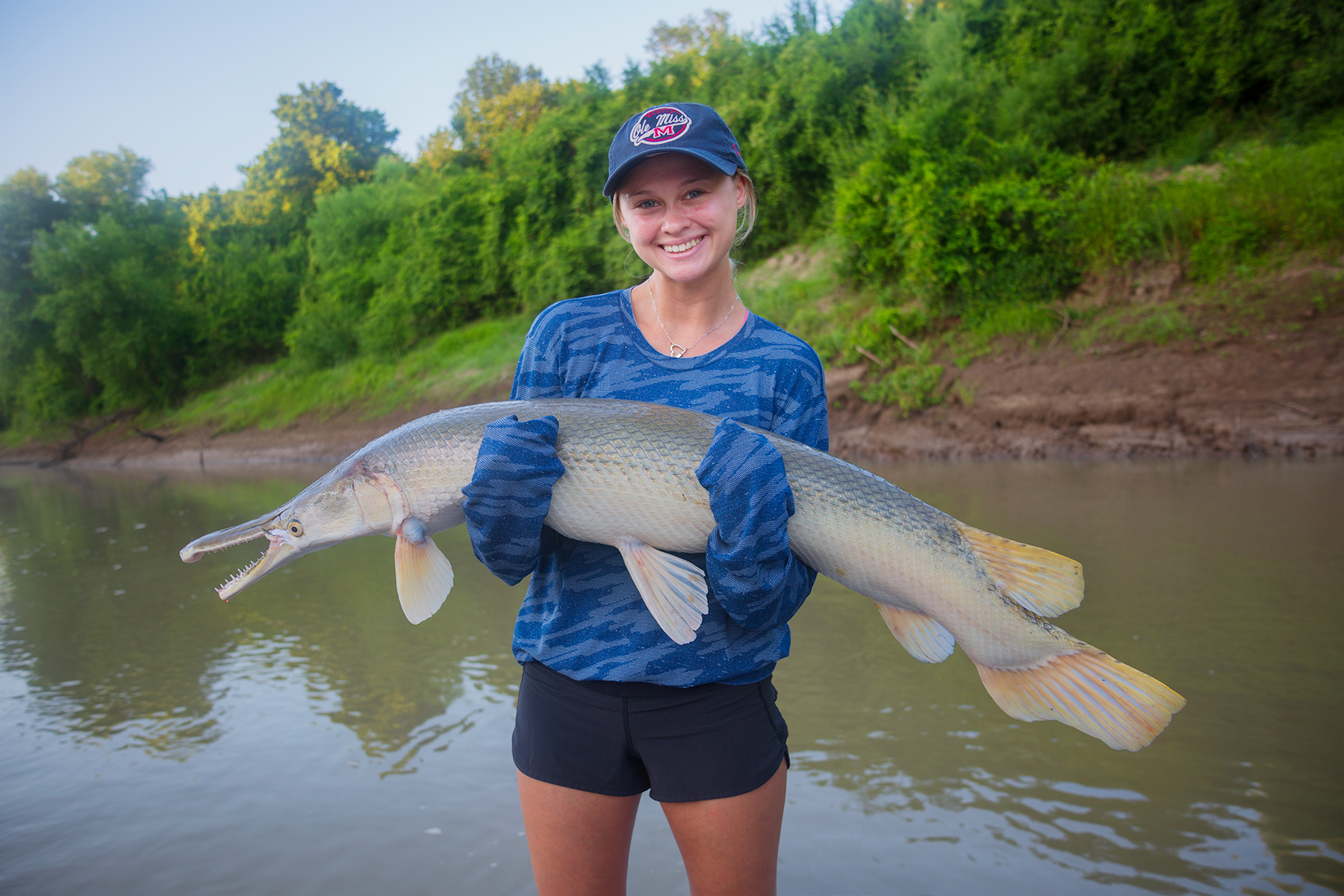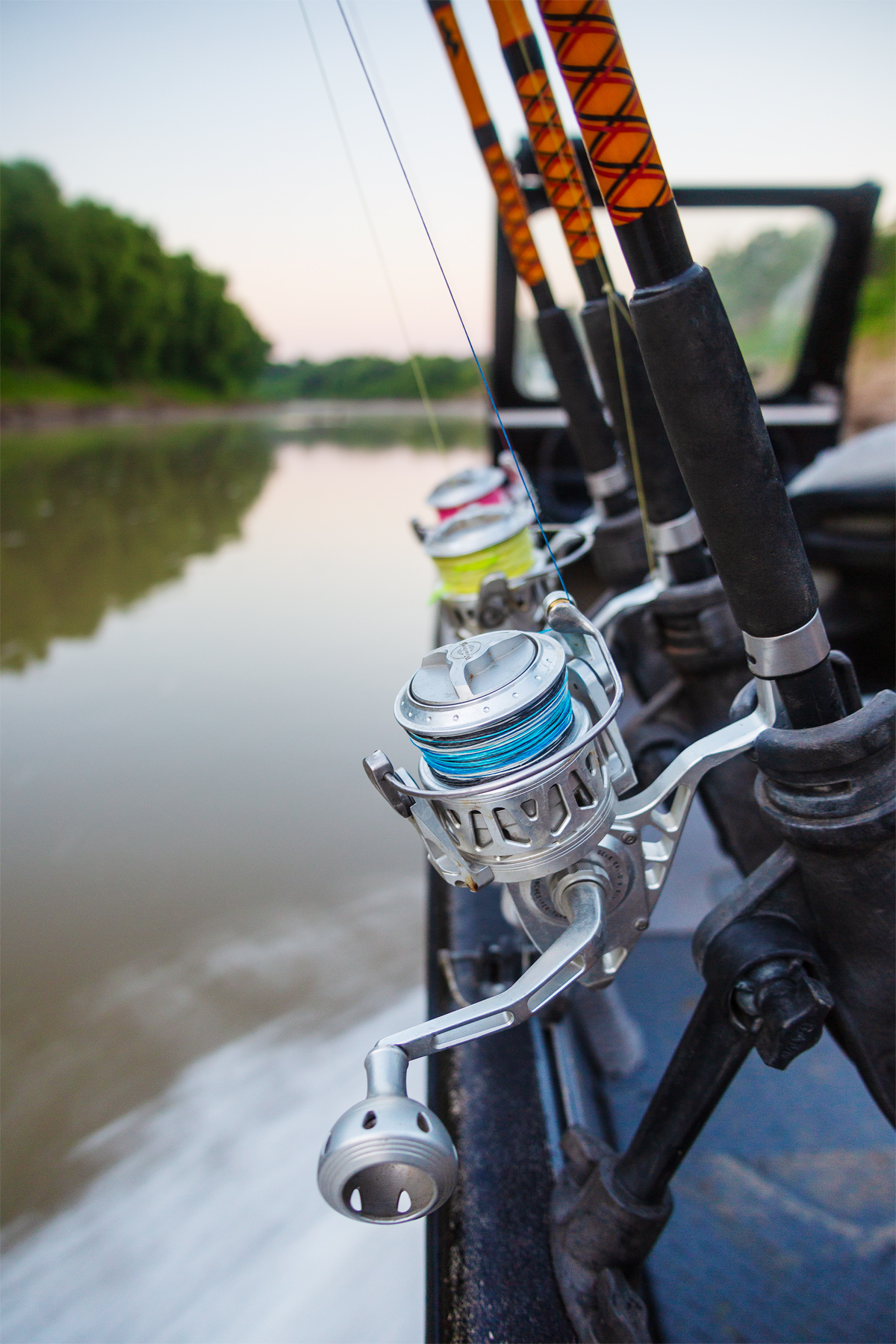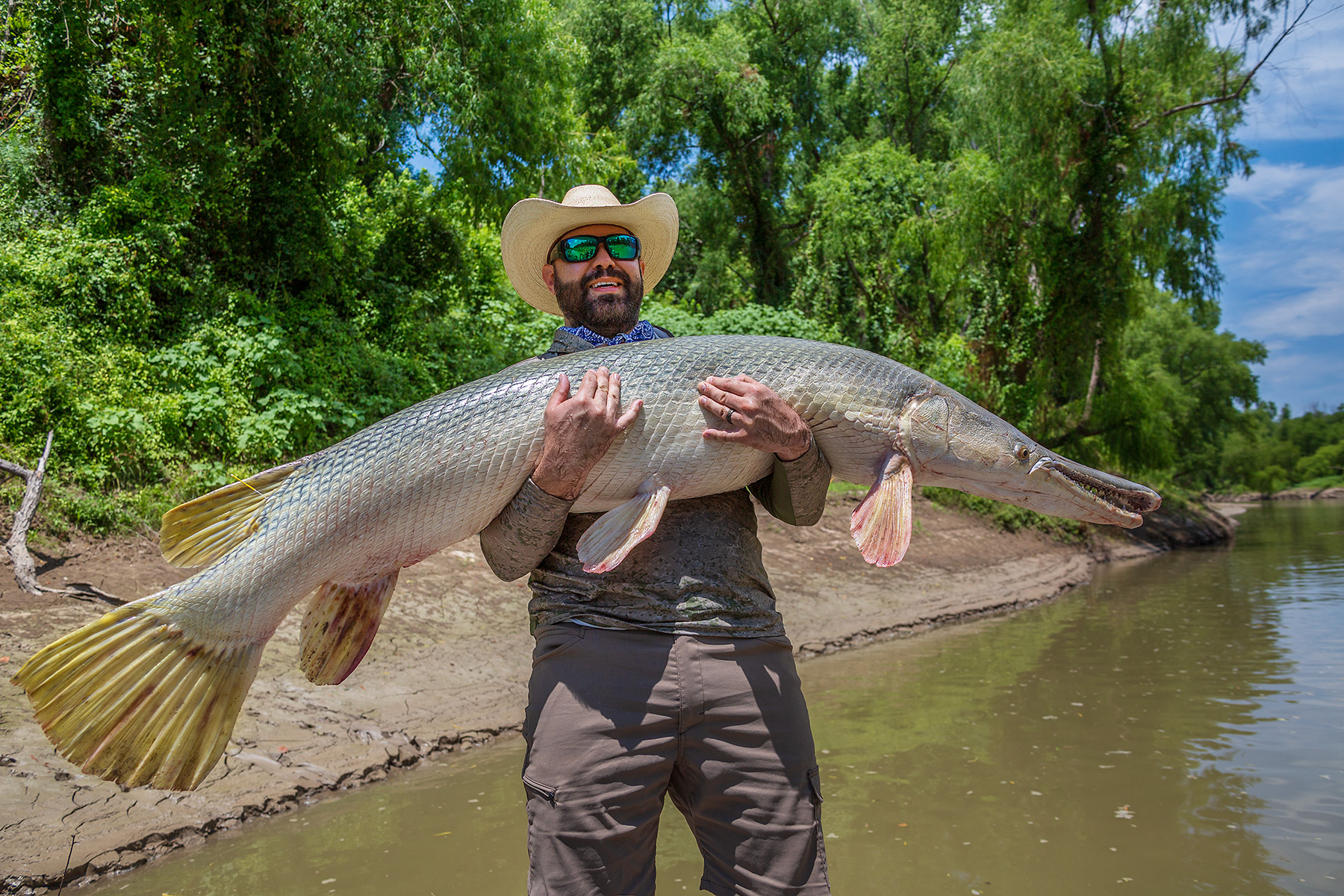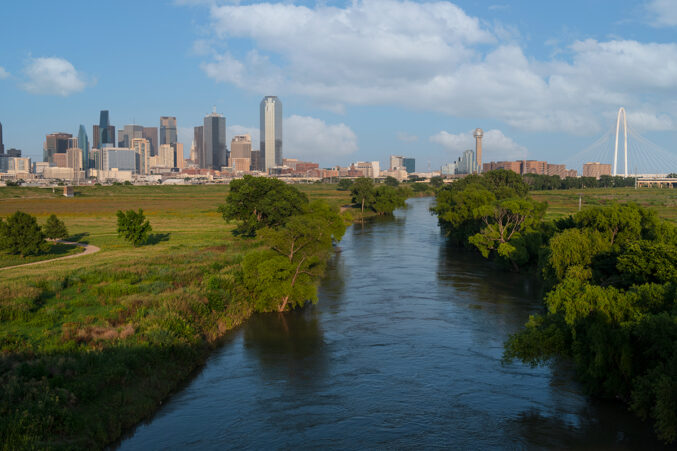Growing up as part of an outdoorsy family in the small West Texas oil field town of Big Lake—which, despite its name, has no actual permanent lake—I spent my summer weekends fishing. We would leave in the predawn morning and drive two and a half hours to the Mexican border to fish in the Amistad Reservoir, at the confluence of the Rio Grande, Pecos, and Devils rivers. We set trotlines for catfish and cast our lures for trophy bass, but occasionally we would hook one of the several grotesque species of gar as bycatch. Like many anglers in that time, I thought I was doing the fishery a favor by dispatching these nuisance fish with the preferred method of breaking the fish’s back over my knee before letting them slip back under the water. These undesirables preyed on the prized game fish. Or so we thought.
As a child, I heard a legend of an alligator gar, the largest gar species, snatching a pet toy poodle belonging to vacationers who had let their dog swim in one of the lake’s coves. I assumed this was just something my uncles told me to keep me from swimming too far from the boat when cooling off from the summer heat.
Years passed, and after college I moved to Dallas, then later to the northern shores of Lake Ray Hubbard, in Rockwall, to start a family. One evening while scrolling through my Instagram feed, I saw a photo of a fisherman holding an alligator gar with the Dallas skyline in the background. The fish had to weigh more than 100 pounds. I knew these monsters swam in the Trinity River, but it had never occurred to me to pursue them as a game fish, let alone in a stretch of the river I could see from my downtown office window. A few weeks later, I found a guide—the guide for gar fishing on the Trinity.
The sunglasses hanging from the collar of my shirt fog up instantly as I step out of my air-conditioned truck and into the humid morning air. It’s the last day of June, and even as the sky fills with the pink and amber hues of sunrise, it’s already hot. At a private boat ramp on the Trinity River below Richland-Chambers Reservoir, Captain Bubba Bedre introduces himself.
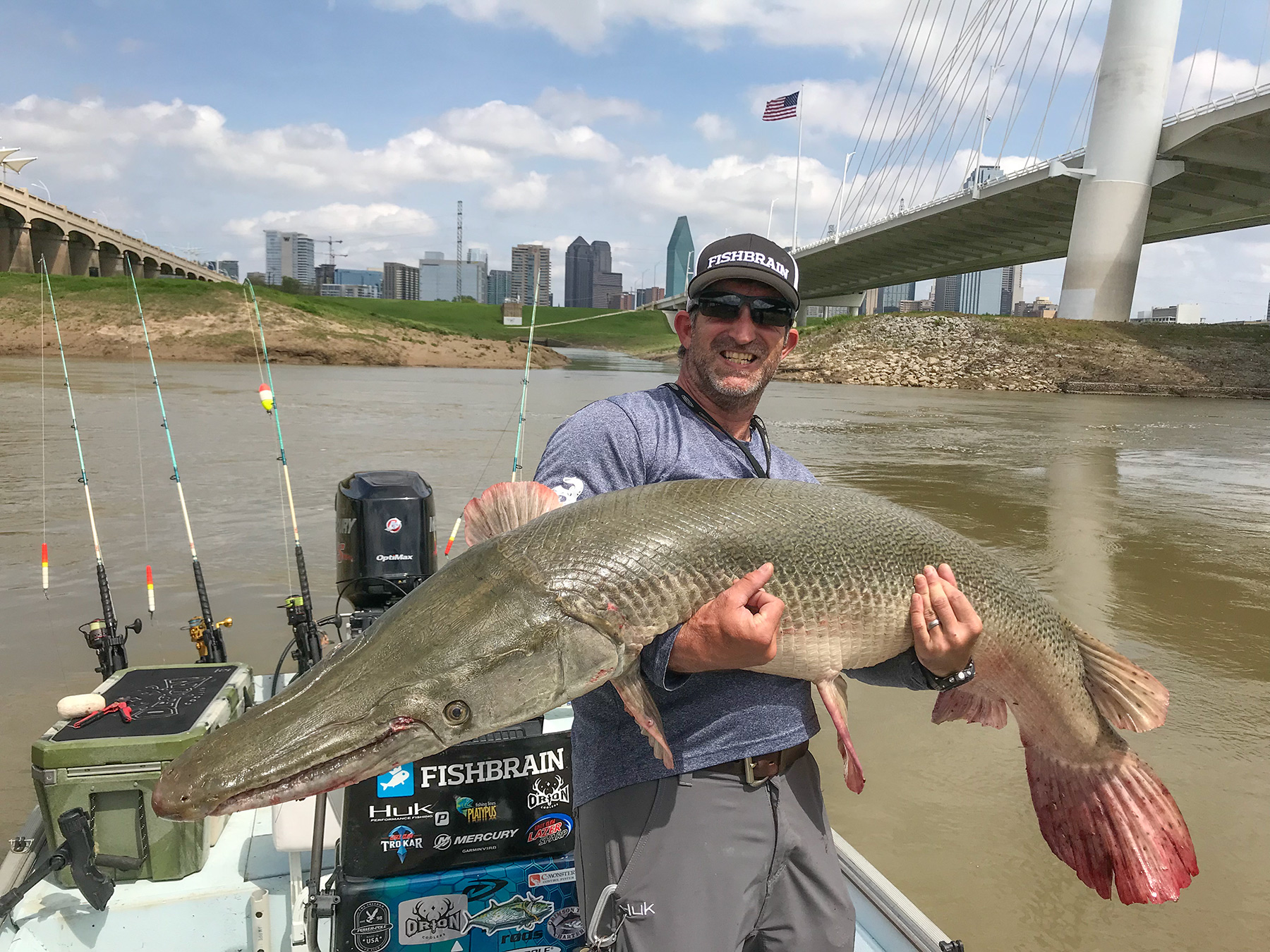
Bedre is an engineer with Union Pacific Railroad and the foremost alligator gar guide in the world. He is a member of the Freshwater Fisheries Advisory Committee with the Texas Parks & Wildlife Department and owner of Garzilla Guide Service, the largest fishing guide operation specifically geared for the trophy-size gars of the muddy waters of the Trinity between Dallas and Houston. He and his team have led clients to multiple certified International Game Fish Association world records.
Steam fog swirls over the murky waters laden with sediment from the blackland prairie as we load our gear into the boat. Our original plan was to fish farther upriver in Dallas, using a ramp under the Sylvan Avenue Bridge, but the gate to Trammell Crow Park and its river access had been locked sometime the week prior. We decided to abandon the urban boat ramps and fish farther downstream, where water levels were higher. Bedre pulls the anchor and points his jetboat upstream.
Access to this stretch of river is limited, and boating here feels like traveling back in time. Steep riverbanks are carved from the surrounding bottomland hardwoods. Snowy egrets skitter as we come around a bend, and a bald eagle circles overhead.
Bedre has guided several celebrities, including TV host Jeremy Wade for the Animal Planet docuseries River Monsters. In the episode, Wade investigates stories of reported human attacks by alligator gar, which he debunks. “Once that show aired, I had people from all over the world wanting to come fish with me for these gars,” Bedre says in his deep Texas drawl as he rigs up our rods.
Our bait of choice is a chunk of smallmouth buffalo fish hooked in the back with a large treble hook attached to a steel leader. The bait is cast without a weight and the bail of the reel open, free floating in the current under a large cork. Our lines were wet for just a few minutes, when a reel begins to hum as it unspools heavy braided line downstream.
“We’ve got a runner,” Bedre says. After traveling about 50 yards, the cork heads across the river channel, toward the opposite bank, before changing direction again and heading back. “She’s got it in her mouth and is about to eat it,” he says as the cork stops moving.
Emily Bone, our intern, is first up on deck to the fishing pole and reels in the slack before the hook is set. The fight is on. The gar leaps halfway out of water as if dancing in an effort to throw the hook. After a strenuous five-minute battle for both angler and fish, Emily overpowers the gar, and Bedre helps her hoist the fish on deck. It is a small gar, but still a large fish, at almost 4 feet long. Good start, but not what we are after. We take a few pictures, and Emily gently releases her catch.
Propelled by a large, asymmetrical, paddlelike tail and a torpedo-shaped body, alligator gars have a menacing profile with two rows of teeth on the upper jaw. The fish is armored in interlocking diamond-shaped scales that are so hard that Native Americans used them as arrowheads. Their fossils have been found in Permian Basin deposits that date back 200 million years, making this fish a genuine living fossil. Gar have not evolved much in the last several million years, but to call them primitive is to miss the point. They are highly adapted to their environment.
Gars are apex predators and help maintain healthy numbers of many other species. They have a spiral valve intestine, like those of sharks, that enables them to efficiently extract nutrients from their diet consisting of fish, turtles, birds, and small mammals. The gar has another evolutionary tool: toxic eggs.
Then came some competition for which the gar wasn’t prepared. In the early 1900s, the city of Dallas moved the Trinity River’s channel half a mile or more away from downtown. The U.S. Army Corps of Engineers removed the river’s natural meanders and installed a series of locks and dams in preparation for a project that would allow barge traffic from Dallas to Galveston Bay. That failed effort disconnected the river from flood plain habitats.
“We’re cutting off alligator gars from their integral spawning habitats,” says Dr. Solomon David, an assistant professor at the University of Minnesota who operates GarLab, a research team focused on the ecology of gar species. “If they can’t make it into those flood plain areas and into flooded terrestrial vegetation to spawn, then we’re cutting off future generations of the fish.”
It takes an average of 10 years for alligator gar to reach breeding age, and they can live 100 years, a good trait to have when many years of drought can interrupt good spawning conditions. “Alligator gar populations, they tend to match up with big flood years,” David says, “and those tend to be good reproductive years.”
Fishermen and even some state agencies spent much of the last century trying to eradicate the misunderstood fish. In the 1930s, the Texas Parks & Wildlife Department (then called the Texas Game, Fish, and Oyster Commission) had gone as far as creating an electrofishing vessel dubbed the Electrical Gar Destroyer. In some states, as late as the 1980s, it was even illegal to release a gar back into the water alive.
“For a long time, they were considered trash fish because people thought that they were eating game fish like bass, crappie, or fish that traditional fisheries management thought were more valuable,” David says. Studies of stomach contents eventually exonerated the gar.
Though the myths of human attacks have been debunked, what about that toy poodle I heard about as a kid? “They’ve got to swallow their prey whole, so you need a big alligator gar, and you need a pretty small toy poodle. So it’s possible,” David says, “but it’s pretty unlikely.”
After alligator gar were extirpated from much of their historical range, going as far north as Ohio and Illinois, Texas is now home to the healthiest populations in the country. TPWD has established a statewide bag limit of one fish per day to avoid the overharvest seen in other southern states. The agency imposes even stricter rules on the Trinity River. On sections of the river south of I-30 and above I-10, only 150 annual permits are issued to anglers to harvest an alligator gar over 48 inches long. Sections of the river may also temporarily close to fishing when conditions are conducive to spawning.

Throughout the morning, we land several gars, each larger than the last but none big enough to keep a photo of. As the sun rises higher, though, so does the water temperature, and that brings the big fish to the surface to breathe.
Gars can inhale gulps of air by porpoising out of the water and using their highly vascularized swim bladder like a lung. It’s called “rolling.” This allows them to survive in poorly oxygenated water that would kill other fish during the hottest summer days.
As the sun beats down, we anchor in the shade of a willow tree and spot several large gars rolling in the flat water of a deep pool. “That’s a good fish,” Bedre says. Moments later, the reel starts letting out line, and the cork heads downstream. “Pull up the anchor. We’re going to have to chase after her!” Bedre says.
He fires up the jet motor, and we head in the direction of the cork as I hurriedly reel up the slack line from the front deck. Once the cork begins to turn and head back upstream, meaning the gar has fully taken the bait, I yank my rod skyward to set the hook.
The fish turns back downstream and runs, the reel’s drag letting out line to relieve the tension. I am shocked by the power of the fish. It feels like I’m trying to pull a truck through the water—and I am losing.
I leap over the fish, narrowly avoiding the mouth of sawlike teeth as she thrashes about.
We drift dangerously close to a pile of downed trees in the middle of the river. Bedre attempts to maneuver the boat out of its way, but not in time. We slam broadside into the trees, their limbs crashing into the water around us. With the boat now pinned between the river’s current and the logs, I brace my feet against the siderail, and the gar makes another run. The butt of the rod digs into my abdomen as I fight to steer the massive fish from becoming tangled in the submerged tree limbs.
The gar finally emerges from the murky depths and goes airborne. But now it is spent. Frankly, so am I. Bedre and I work together to haul the fish over the side of the boat and onto the deck, where I make several attempts at measurements.
“Watch her head!” Bedre yells, as I leap over the fish, narrowly avoiding the mouth of sawlike teeth as she thrashes about on deck. While I’m distracted, she swings her powerful tail against the outside of my right knee. My leg buckles. It feels like someone has smacked me with an oar. “Stings, doesn’t it?” Bedre asks with a laugh.
After the fish has calmed down, we get a good measurement: 76.5 inches. A fish longer than I am tall and weighing over 100 pounds. Covered in the thick slime that helps protect them from infection and parasites, the gar is difficult to lift without tipping over forward. We take photos and release the fish, but not before giving her a small piece of jewelry as a parting gift for her valiant effort. A serialized identification tag inserted into the base of the dorsal fin will identify this gar if she is ever caught again, allowing biologists from TPWD’s Inland Fisheries Division to track her growth in the years to come.
Alligator gar haven’t changed much in a few million years, but our understanding of them has. In the same way, our respect for the Trinity continues to evolve. With some luck and more than a little hard work, one day my children and their children’s children will appreciate that at the edge of downtown Dallas, between those levees, there runs a river of giants.
This story originally appeared in the October issue of D Magazine. Write to [email protected].
Author



